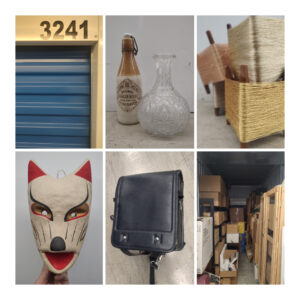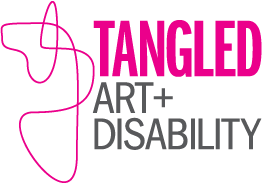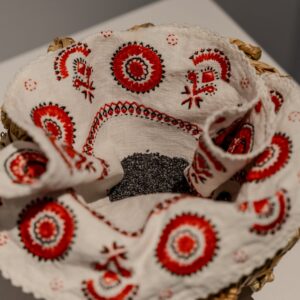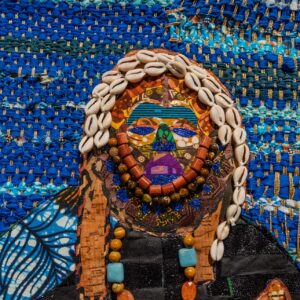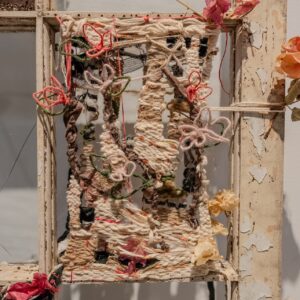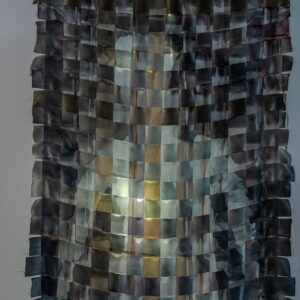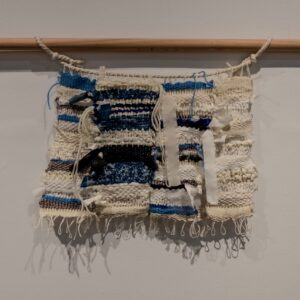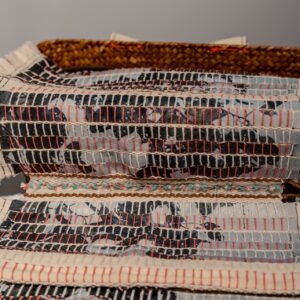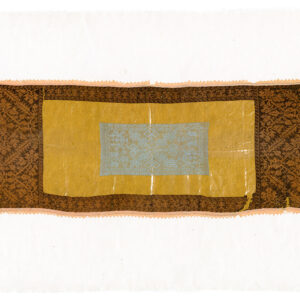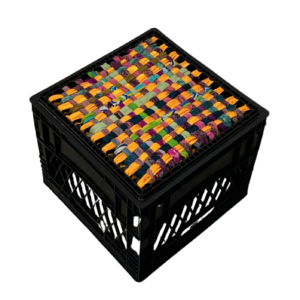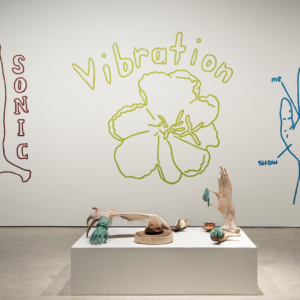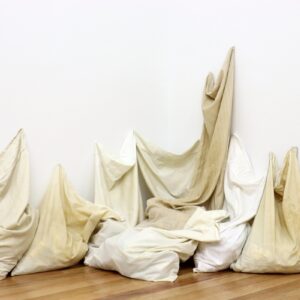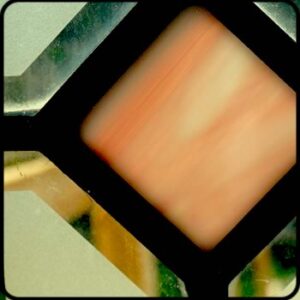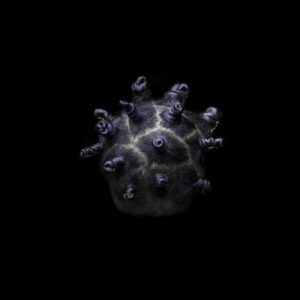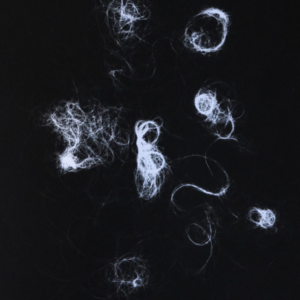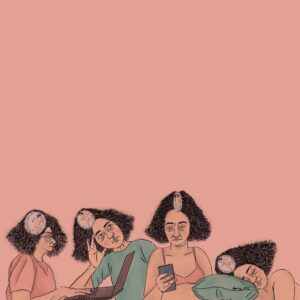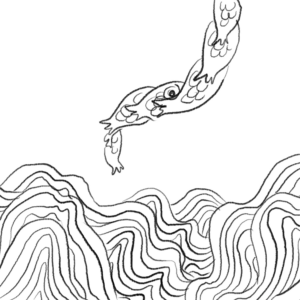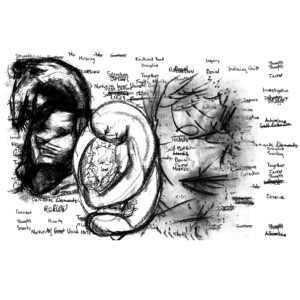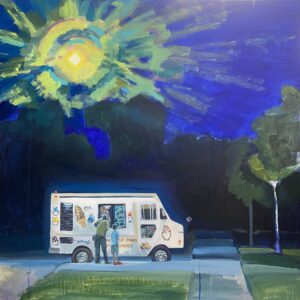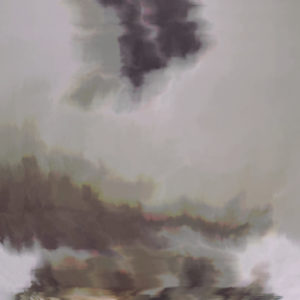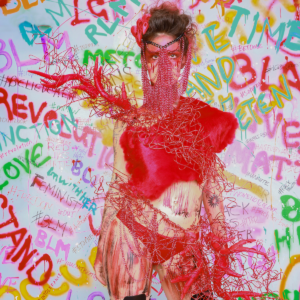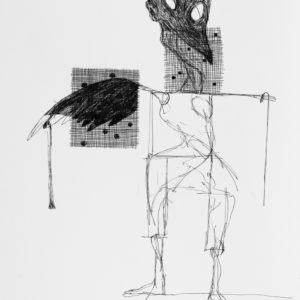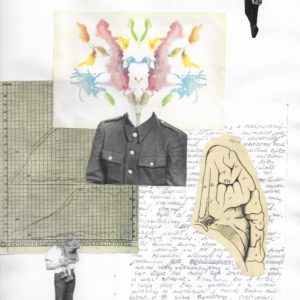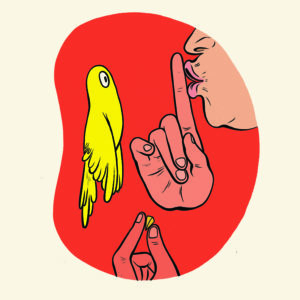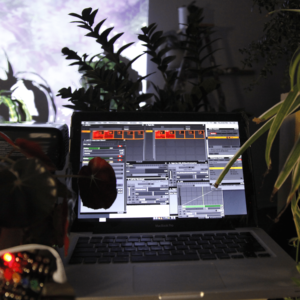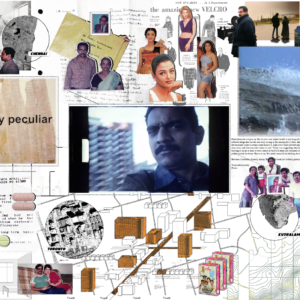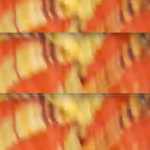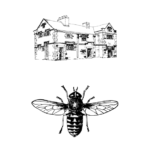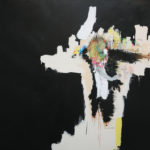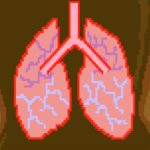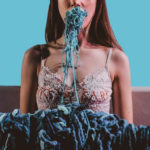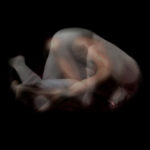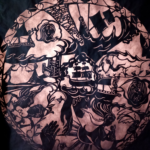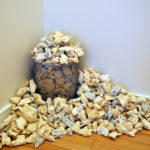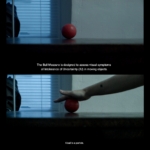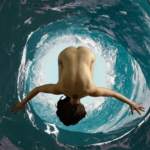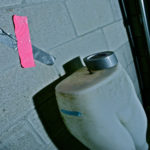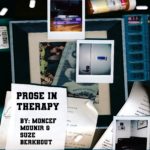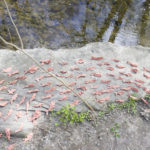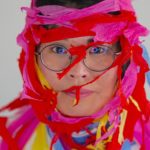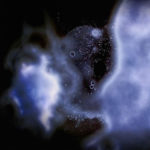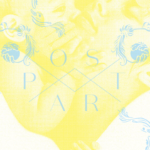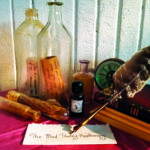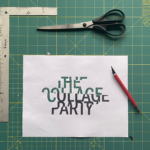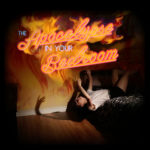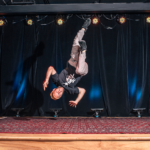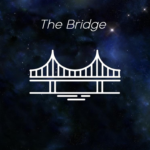The Artist in Residence program is part of Workman Arts’ Rendezvous with Madness Festival and is in collaboration with Tangled Art + Disability. Our 2024/25 Artist in Residence is Helen Kong.
The 2024/25 Artist in Residence Exhibition at Tangled Art + Disability is NOW CLOSED
This exhibition introduces Helen Kong’s interconnected practice; between object making, self awareness and close observations, Helen interweaves a wide range of concepts and materials into her artistic practice.
ReHoming emerges from a careful consideration towards objects and their meanings, blurring the differences between personal archives and historical objects is at the core of this exhibition. In ReHoming, we experience a full cycle of making the personal public and the public personal, while manifesting acts of care, togetherness and continuity.
This live exhibition aims at capturing Helen’s deep and tangled connections with personal objects, yet, it opens up endless possibilities to how and where objects can be taken care of.
While untangling such connections, Helen takes us through a close observation to the process of letting go and claiming, both objects and feelings.
ARTIST STATEMENT
“After a stressful residential move during the pandemic in 2021, where I lost my home of 10+ years and needed to rehome beloved pets, packed my life rapidly into storage, and found myself transitioning in between spaces that feel yet to be a home. ``ReHoming`` is a project that invites people to join in my journey of revisiting the past wounds, memories, and old dreams through sorting out my storage of belongings. I hold on to these items that seem dear to me, but can no longer keep them. As part of my practice of letting go of the material things along with the sentiments that no longer serve me, I will be finding new homes for objects so they can have a new life."
– Helen Kong, 2024/25 Artist in Residence with Workman Arts & Tangled Art + Disability
This two-part installation will be a live exhibition where the artist will update the contents weekly during the exhibition period.
Part One: Rehoming Objects of Significance – These objects will be catalogued with their stories and dreams of future homes. They are available for people to bring home and revive them again.
Part Two: Rehoming Journal – A visual arts journal where Helen will create small entries to process the emotions throughout this journey (from small paintings/drawings, to weaving samples, to vessels) to rehome and process their overwhelming feelings, as they go through this necessary process of letting go and finding homes for objects that are sentimental, yet currently lifeless.
All the items will be documented in an Instagram account where people can read and listen to stories, details, and/or the history of each piece. DM on the account for inquiries and to request adopting items.
ABOUT THE ARTIST
Helen Kong is a tea practitioner, ceramic artist specializing in making tea wares for Japanese and Chinese tea, and the owner and facilitator of Secret Teatime; a clay space hidden in Scarborough where people sip tea and play with clay. Aside from making, she is also a ceramics teacher and a facilitator/organizer of multi-sensory events focused on tea and food where she shares her knowledge about the Way of Tea, its philosophies and how it relates to her daily life. After more than a decade of being a primary caregiver and working as an entrepreneur artist, her studies in ritualized tea have been a source of grounding and coping. Especially in times of life and creative burnout, depression, anxiety, and her own chronic illness. Her studies in tea is also a connection with her East Asian animist roots that allows her to maintain a deep relationship to the materials, tools, and objects she collaborates with in her practice and daily life. Helen is slowly moving from the rollercoaster mindset between over-consumption and scarcity -which manifests in hoarding tendencies- to having true connective appreciation with the objects that she chooses to have in her life. This is a continuous work in progress.
Some of her recent projects include the “Ichigo-Ichie Tea Project” during Nuit Blanche Toronto 2022 which was documented in the C Magazine (Issue 156) article by Jasmine Gui “Different Things in Different Scenes: Encountering Ichi-go Ichi-e in Tea”, “Meeting for Teas” visual arts residency at the Banff Centre (2023), “The Looms We Resemble” group exhibition with Workman Arts (2024), and “In One Chawan: Seasonal Food Labs” co-facilitated with Anson Ng.
ABOUT THE PROGRAM
The Artist in Residence program is part of Workman Arts’ Rendezvous with Madness Festival and is in collaboration with Tangled Art + Disability. By providing time and resources, we believe this can support the development of a body of work to become exhibition ready for a solo show at the Tangled Art + Disability gallery vitrine space. We offer this opportunity to a Workman Arts member who has not or has minimally exhibited their artwork, and would benefit from a solo exhibition.
Helen Kong is our Artist in Residence for the 2024/25 year.
FEB 14 - APR 11, 2025
Location: Tangled Art + Disability (Vitrines)
401 Richmond St W Suite 124, Toronto ON M5V 3A8
Special thanks to our collaborators and funders on the Artist in Residence program.
Curatorial Tour with Fatma Hendawy
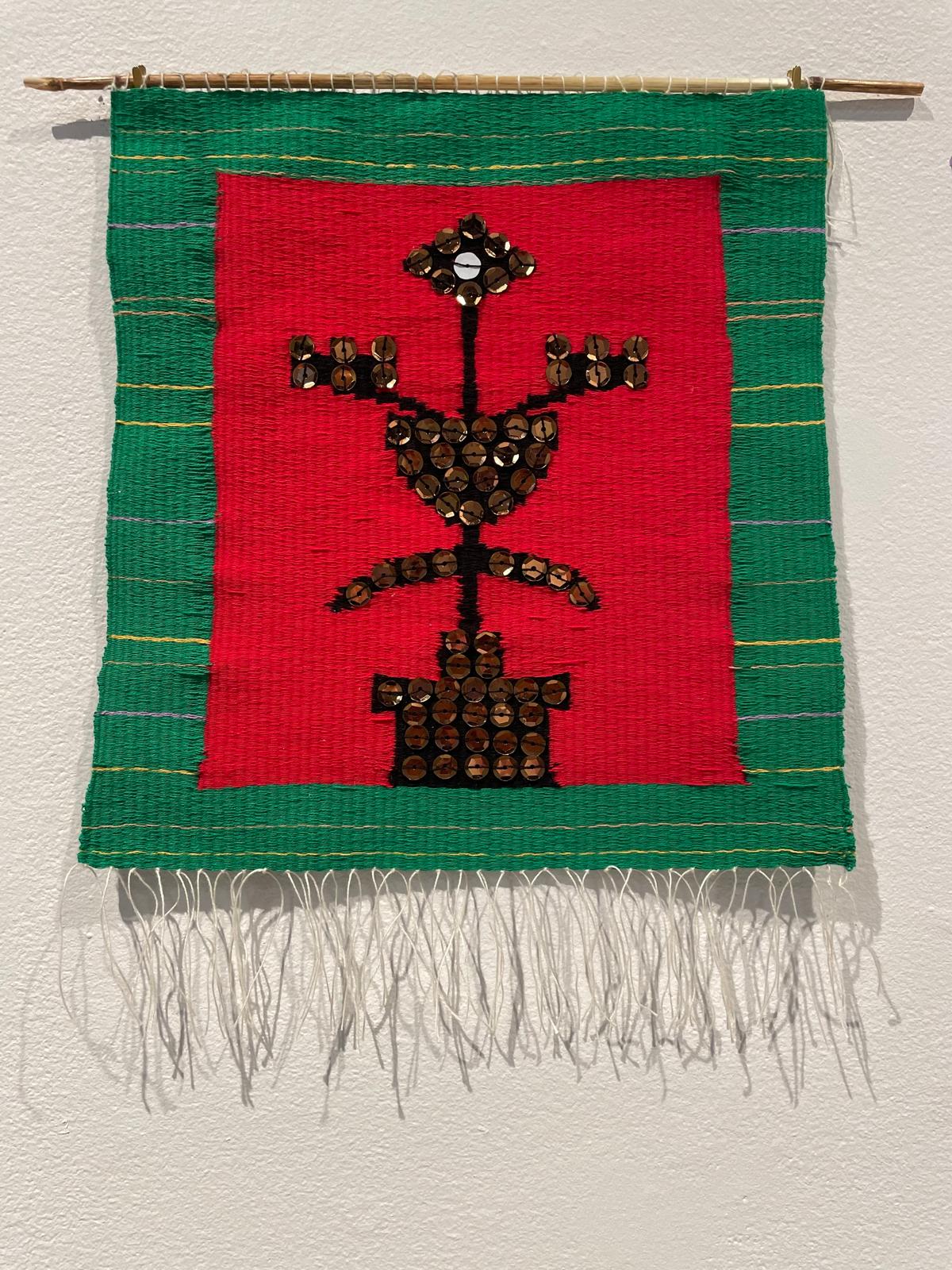
ABOUT FATMA HENDAWY
Saturday, November 30, 2024
Time: 2 – 4 PM (ET)
Youngplace Hallway Galleries (180 Shaw Street, Third Floor, Toronto)
No Registration Required
MORE EVENTS
Storytelling Circle with Sarah Abusarar
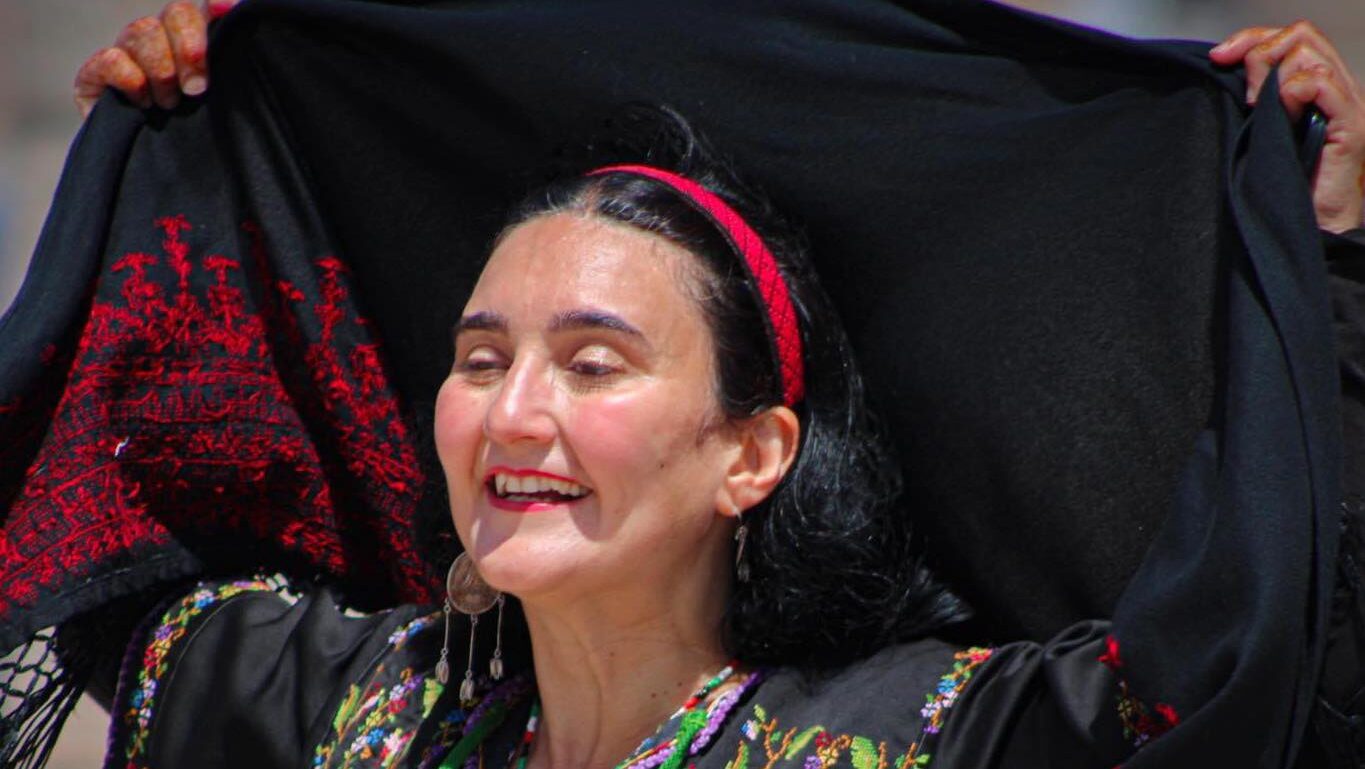
Storyteller, Sarah Abusarar will be accenting the exhibit by weaving Palestinian stories of long ago. The Palestinian traditional stories were told by women in the villages. It is a tradition that was passed down from generation to generation. Often the women would tell these stories while engaging in other folk art such as embroidery and weaving. Sometimes they would tell traditional stories and other times the women would share stories from their own lives as they wove. Sarah comes from one such family. She will be sharing stories that would have been told around the fire in her village Dura by her grandmothers and that she continues to tell in diaspora in order to preserve this ancient tradition.
ABOUT SARAH ABUSARAR
Saturday, November 23, 2024
Time: 12 – 3 PM (ET)
WA OFFSITE Gallery, 180 Shaw St. Unit 302
Registration Required
Maximum Capacity: 14
COME HAVE TEA with HELEN KONG
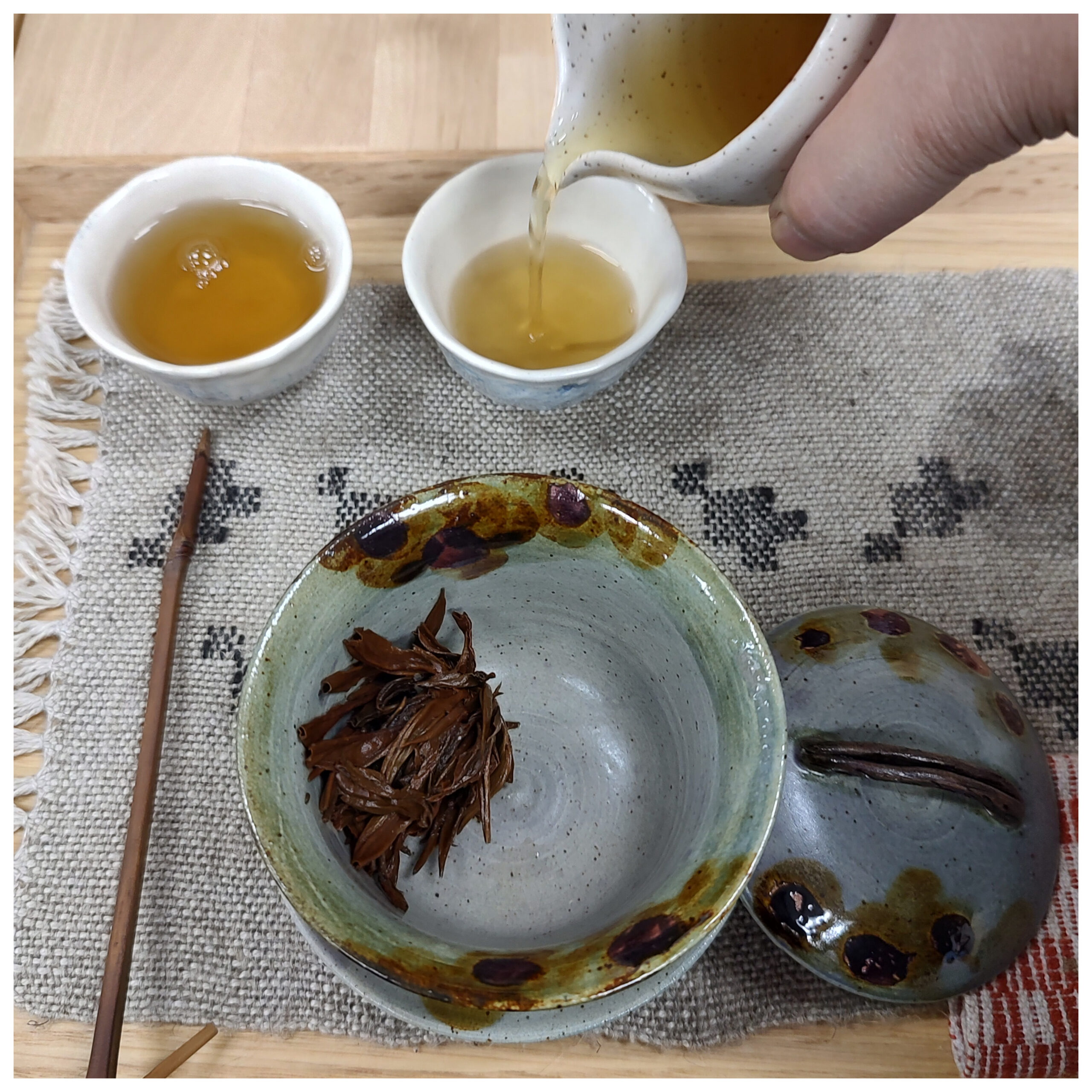
Tea is beyond a beverage. In a tea gathering we engage in a mindful and meditative journey of making, drinking, appreciating, and reflecting with tea.
In this tea gathering, Helen will demonstrate a Chinese tea ritual and serve teas to the participants and attendees. This will serve as context to her piece “Tea by the Apricot Tree” made during the “Way of Weaving” course facilitated by Jana Ghalayini. The tea mat, woven and created into a carry case for a traveling tea set expresses the significance of tea gatherings as a circle of learning and healing through engagement. More information about the piece can be found at the exhibition “The Looms We Resemble”.
ABOUT HELEN KONG
Helen Kong is a second generation Chinese Canadian living and working in Tkaronto (Toronto). She studied her first ritualized tea while living in Japan. Chado (the Way of Tea) is a meditative life journey through tea and hospitality. It is the gateway into art, culture, and philosophy. After returning to Canada, she studied ceramics as a way to better understand tea vessels. She established Secret Teatime, a clay studio where people play with clay and sip tea. She has expanded from making tea wares for Japanese teas to also studying and making wares for her own heritage of Chinese tea.
Saturday, December 7, 2024
Time: 1 – 3 PM (ET)
Open to all – no registration required
Location: Hallway Galleries, Youngplace, Third floor, 180 Shaw St.
Free Entry
MORE EVENTS
Photo: The Looms We Resemble Opening Reception, Henry Chan.
The Looms We Resemble
“The Looms We Resemble” is a group exhibition showcasing textile-based works by 6 artists who bring topics of belonging, the body, healing and ancestry. This unique exhibition is a work in progress as the artists developed their artworks during a weaving class led by instructor Jana Ghalayini. How can collective production of artworks precede curatorial themes and concepts, while we follow the slowness of weaving?
Weaving ideas, actions, memories, and stories together is a practice of care that we all share in time and space. This exhibition includes works by Aga Forfa, Apanaki, Tara Hakim, Merle Harley, Saretta Khan and Helen Kong. Our public programming includes a Storytelling Circle led by Sarah Abusarar and Tea Gathering by Helen Kong.
ABOUT JANA GHALAYINI
Jana Ghalayini (b.1993, Jeddah) is an artist based between Tkaronto, Canada and Jeddah, Saudi Arabia. Ghalayini holds a BFA in Printmaking from OCAD University and is a self-taught weaver who draws inspiration from her Palestinian heritage. Between intuitive weaving, mixed-media work and printmaking, she is interested in repetition and mark-making as process-based forms that act as rituals leading up to the final form of an artwork. She consistently investigates and reflects on the connection between tangible materials and fragmentation while exploring layers in her work and mindfully uses her practice to keep a record of gestural marks documenting personal memory, experience and ideas that can evolve as time goes on.
Youngplace Hallway Galleries (180 Shaw Street, Third Floor, Toronto)
Curatorial Tour:
Saturday, November 30, 2 – 4 PM
Led by Fatma Hendawy
PUBLIC PROGRAMMING
NOV 23 | Storytelling Circle
Saturday, November 23, 2024 | 12-3 PM
WA Offsite Gallery – 180 Shaw St. Unit 302
Registration Required
Maximum Capacity: 14
Storyteller, Sarah Abusarar will be accenting the exhibit by weaving Palestinian stories of long ago. The Palestinian traditional stories were told by women in the villages. It is a tradition that was passed down from generation to generation. Often the women would tell these stories while engaging in other folk art such as embroidery and weaving.
DEC 7 | Tea Gathering
Saturday, December 7, 2024 | 1-3 PM
Hallway Galleries, Youngplace, Third floor, 180 Shaw St.
Free Entry
In this tea gathering, Helen will demonstrate a Chinese tea ritual and serve teas to the participants and attendees. This will serve as context to her piece “Tea by the Apricot Tree” made during the “Way of Weaving” course facilitated by Jana Ghalayini.
ABOUT THE ARTISTS
Agnieszka (Aga) Forfa
Apanaki Temitayo
Apanaki Temitayo is a Toronto-based, disabled, mixed-media textile artist, art facilitator, and mental health advocate. Her work combines African fabrics and storytelling, often exploring themes of identity, heritage, and resilience. She has exhibited in various galleries and her workshops focus on the therapeutic aspects of art, aiming to foster mental wellness and community connection.
apanaki-temitayo-m.pixels.com
Arokin Iwure, Yoruba for Griot’s Prayer, 2024
Tara Hakim
Originally Palestinian, born and raised in Jordan with an Austrian grandmother, Tara Hakim creates public displays of vulnerability that invite the viewer to meditate on notions of self, diasporic existences, and spaces in between – both physically and mentally. Her first short film ‘Teta, Opi & Me’ screened in festivals around the world including RIDM, and won Best Documentary and Audience Choice at MOMO in Zurich 2019. Since then, Tara has been creating short films, experimenting with gallery spaces and currently exploring tactile mediums including ceramics, Tatreez, weaving and glass work.
but you are still here, 2024
Merle Harley
Merle Harley is an artist and maker who continuously creates visual alternate realities balancing the line between beautiful and uncanny. With no specific fixed media they work eclectically with what is readily available or collected. Using mediums such as drawing, painting, knitting, weaving, comic books, videos, built structures, as well as working in theatre and TV. They have exhibited work across Canada and beyond, in galleries and outdoors in site-specific locations and are particularly interested in stories based in nature, animals, mental health and queer themes.
warm hands weave shadows, 2024
Saretta Khan
Saretta Khan is Bangladeshi-Canadian born and raised in Toronto. Ever since being a child she has always been doing some form of art such as drawing and painting. She’s heavily influenced by her mother who is also an artist/painter. Her mother recognized Saretta’s talents at an early age and allowed her to explore and discover her passion for art. Currently, Saretta is a multidisciplinary graphic designer/artist who graduated from an advanced graphic design program at George Brown. She is also teaching art for The GEM (Giving Education Meaning)community program which allows her to introduce the wonders of art to students with learning disabilities. Her goal is to facilitate an inclusive space for them to express their creativity.
The Ocean, Textile, 2024
Helen Kong
Helen Kong is a second generation Chinese Canadian living and working in Tkaronto (Toronto). She studied her first ritualized tea while living in Japan. Chado (the Way of Tea) is a meditative life journey through tea and hospitality. It is the gateway into art, culture, and philosophy. After returning to Canada, she studied ceramics as a way to better understand tea vessels. She established Secret Teatime, a clay studio where people play with clay and sip tea. She has expanded from making tea wares for Japanese teas to also studying and making wares for her own heritage of Chinese tea.
Tea by the Apricot Tree, 2024
ALSO OF INTEREST
Illustration: Jenny Chen
IN THE EXHIBITION:
In Praise of Voice Notes and Penguin Pebbling (part of Mourning Microcosmmutes)
m. patchwork monoceros
ARTIST TALK
ABOUT THE EXHIBITION
Indebted to the words and thinking of disability justice educator Mia Mingus, wherever you are is where i want to be offers access intimacy as the un-structuring logic for our collective queer and trans crip futures. Refusing the loudly eugenicist mapping of isolation and disposability upon our disabled queer-trans-crip bodyminds, the multi-disciplinary practices platformed here speak with a loved urgency to the ways in which embodied experiences of access intimacy have the capacity to reconfigure time, space, and relation. Spanning installation to textile to video, the work of these artists proposes the act, experience, and feeling of crip kinship as a means and model of radical future-making.
ABOUT THE CURATOR
Sarah–Tai Black (they/them) is an arts curator and critic born and (mostly) raised in Treaty 13 Territory/Toronto whose work aims to center Black, queer, trans, and crip futurities and freedom work. Their curatorial work has been staged at Cambridge Art Galleries (Cambridge, ON), Dunlop Art Gallery (Regina, SK), MOCA (Toronto ON), PAVED Arts (Saskatoon, SK), and A Space Gallery (Toronto, ON).
ALSO OF INTEREST
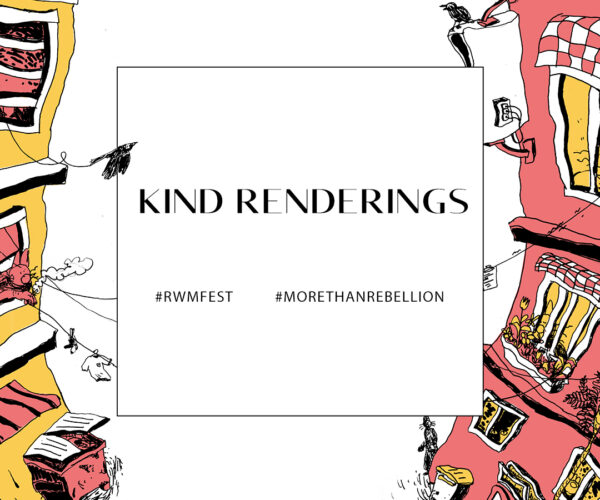
AN IN-PERSON EXHIBITION
Kindness is not an act of weakness. It is an act that resists societal expectations of doing and saying nothing. This form of rebellion is evident in this year’s Rendezvous With Madness visual art exhibition whereby the six exhibiting artists address within their work personal experiences that challenge what mental health and wellness looks like. Action is apparent through frameworks of compassion, thought-provoking imagery and considerate storytelling.
IN THE EXHIBITION:
This year, the exhibition in the Rendezvous With Madness Festival will be presented in-person throughout the festival from October 27 to November 6.
VENUE
Workman Arts Offsite Gallery, Artscape Youngplace, 180 Shaw Street, Unit 302, Toronto
GALLERY HOURS
October 27 to November 6, 12 – 6 PM
EXHIBITION OPENING & ARTISTS TALK
October 29, 1-4 PM, Talk at 2:30 PM
After the opening reception, engage with the artists of kind renderings as they delve into their work and practice.
TOURS
Please join us for a guided tour on Thursday, November 3 at 5 PM
ACCESSIBILITY
If in-person access is a barrier, please contact Raine Laurent-Eugene at raine_laurenteugene@workmanarts.com
Visit the Accessibility page for further festival information and wayfinding.
WORKMAN ARTS MEMBER ARTISTS JURY:
Sylvia Frey, Visual Artist, Toronto
Sylvia Frey is a Mad, Queer, BIPOC Visual Artist based in Toronto. Her artwork explores the intersection of Madness, Healing, and Art. She is an interdisciplinary artist, working in the mediums of painting, drawing, writing, and performance. Most currently, she has started to explore film and photography. Her artwork can be found in various private collections in North America and Europe.
Esmond Lee, Visual Artist, Researcher, and Architect, Toronto
Esmond Lee is an artist, researcher, and architect based in Scarborough. Lee explores long-term, intergenerational experiences of migration in peripheral spaces. He holds a Master of Architecture and is pursuing a Doctorate in Critical Human Geography. Lee draws from these seemingly diverging backgrounds to examine identity, belonging, and nuanced cultural and political borders in the built environment. Recent works include installations for Nuit Blanche Toronto, developed during his time as the Doris McCarthy Artist-in-Residence, and at Malvern Town Centre for CONTACT Photography Festival. Lee’s current projects include two photobooks: ‘Below the City’, recognized by the Burtynsky Grant, and one for Woodside Square Library as the TPL Artist-in-Residence.
Laura Shintani, Visual Artist, Toronto
Laura Shintani is a multimedia multidisciplinary artist who’s curiosity leans into learning, leadership and making friends with the interior monologue of the mind. Having a Japanese-Canadian ancestry, she directs themselves to create work that re-connects a disconnected past to the present. She lives with and embraces neurodiversity.
Her work has been shown at the Royal Ontario Museum, Campbell House Museum, Tangled Arts + Disability and Workman Arts. She helps to facilitate CAMH’s client “Art Cart” through Workman Arts and has received grants from and has been on juries for the Ontario Arts Council. Her most recent skill is trying her hand at taiko drumming!
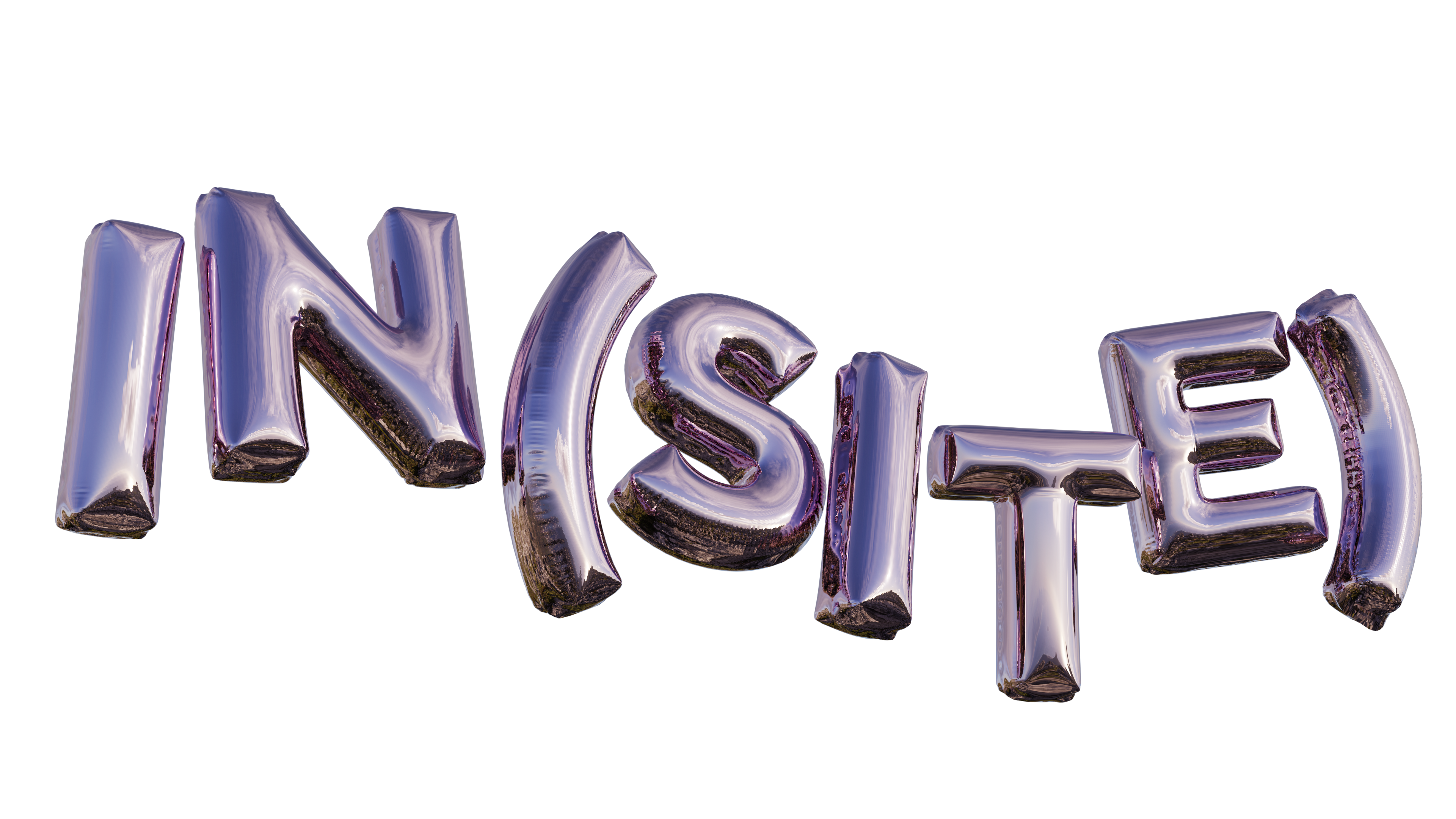
A Virtual Exhibition
In-Site, Incite, & Insight
Rather than experience the festival’s exhibition on-site, this year we experience it “in-site” — in a website, in the digital world, in the virtual. The works in the festival this year have been selected with the intention of being experienced virtually.
The artists bring insight to their experiences of the world having changed, how it continues to change and what this change can offer. This includes our growing awareness around mental health, our relationships with both the physical and digital worlds, and how the works can incite us into action. The exhibiting works investigate these themes and more, providing room to engage with the arts in a time when interacting and experiencing work has been significantly impacted. Through these works, we recognize that we are in the moment, in the current, in the site.
Visit the virtual exhibition here:
insite.workmanarts.com
IN THE EXHIBITION:
This year, the exhibition in the Rendezvous With Madness Festival will be presented virtually which will be accessible throughout the festival from October 28 to November 7. Work including timed events and performances will be accessible through the virtual exhibition site through the link below:
VIRTUAL GUIDED TOUR
Watch the virtual guided tour of the In(site) exhibition held on Sat, Oct 30, 12 PM ET
SPECIAL IN PERSON FEATURES
- How we cared video installation will be on the ground floor window of 1025 Queen St W, available 24/7.
- UNBREAKABLE performance will be presented live on opening night, in the CAMH Auditorium at 1025 Queen St W.
ONLINE LIVE EVENTS
- Green Gazing invites the public to engage in a movement class as a virtual participatory performance on the final day of the festival.
ARTIST TALKS
- Szepty/Whispers:Dialogue
Collaborator Artist Talk - Self Isolation – Learning to make Computational Art during a Global Pandemic
A Master Class by Chelsea Watson
ACCESSIBILITY
If either online or in-person access is a barrier, please contact Paulina Wiszowata at paulina_wiszowata@workmanarts.com.
Workman Arts will have available the In(site) virtual exhibition displayed and interactable on a monitor in their front office at 1025 Queen St W Suite 2400.
Available during Box Office hours:
Monday – Friday, 10 AM – 4 PM.
Visit the Accessibility page for further festival info.
ALSO OF INTEREST
David Constantino Salazar: Forever (Bird-Botanicals) @ Gardiner Museum
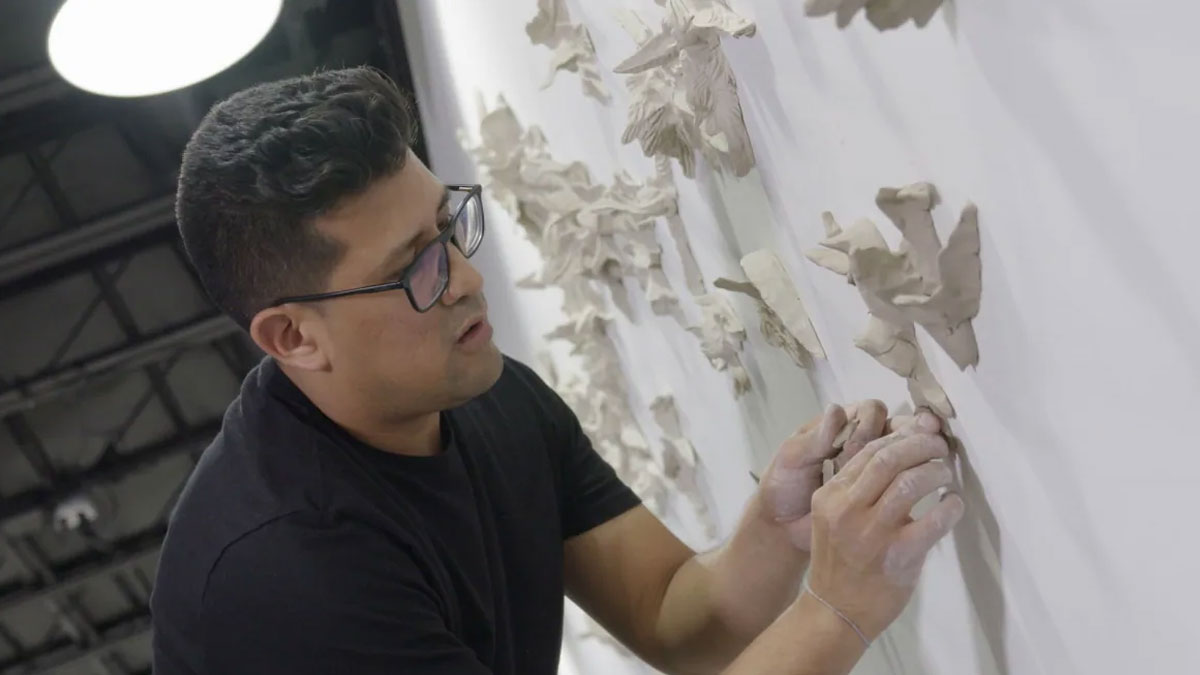
- August 21 to 31, 2021
Community Arts Space 2021
Project led by David Constantino Salazar
In collaboration with participants from Workman Arts
Established in 2016, Community Arts Space (CAS) is the Gardiner’s incubator for arts-based projects that build community through clay making. As part of CAS2021, artist David Constantino Salazar presents Forever (Bird-Botanicals) in partnership with members of Workman Arts, a Toronto-based arts organization that promotes a greater understanding of mental health and addiction.
Inspired by folk tales and allegories passed on from his grandparents in Ecuador, Salazar uses the symbol of the bird to explore themes of hope, freedom, and growth while reflecting on personal tragedy and collective trauma. Salazar asks us to meditate on the concept of human resilience, an idea especially pertinent as we begin to recover from the impact of the global pandemic.
Salazar created over 200 birds during a two-month residency at the Gardiner. While the clay was still soft, he threw the birds at a wall, evoking a physical, mental, and spiritual rupture, and at the same time preserving their beauty and energy. As the title suggests, the birds endure, albeit in a new form. Salazar encourages us all to approach traumas as opportunities for transformation, adaptation, and renewal, while remaining sensitive to how these experiences change and challenge us.
Appearing alongside Salazar’s work are birds made by participants from Workman Arts who took part in online workshops lead by the artist in July 2021. In contrast to Salazar’s birds, displayed on the gallery walls, the birds created by the Workman Arts participants gather on the ground. The space between these two groupings creates an uncomfortable tension that we are encouraged to sit with rather than ignore.
Additional birds made by community members and Gardiner visitors in a series of hands-on workshops are on view throughout the Museum.
David Constantino Salazar is a Toronto-based sculptor with a Master of Fine Arts degree from OCAD University. He has exhibited widely, including at Carnival, Rio de Janeiro (2012); the Spadina Museum, Nuit Blanche, Toronto (2015); and the first presentation of Forever (Bird-Botanicals) at the third International Biennial of Asunción in Paraguay (March 2020).
Supporting Sponsors
Susan Crocker & John Hunkin
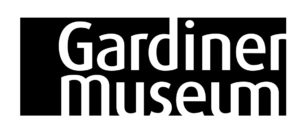
BROWSE CURRENT EVENTS
2025 Art Cart Spring Showcase
07 JULY - 30 SEPTEMBER 2025
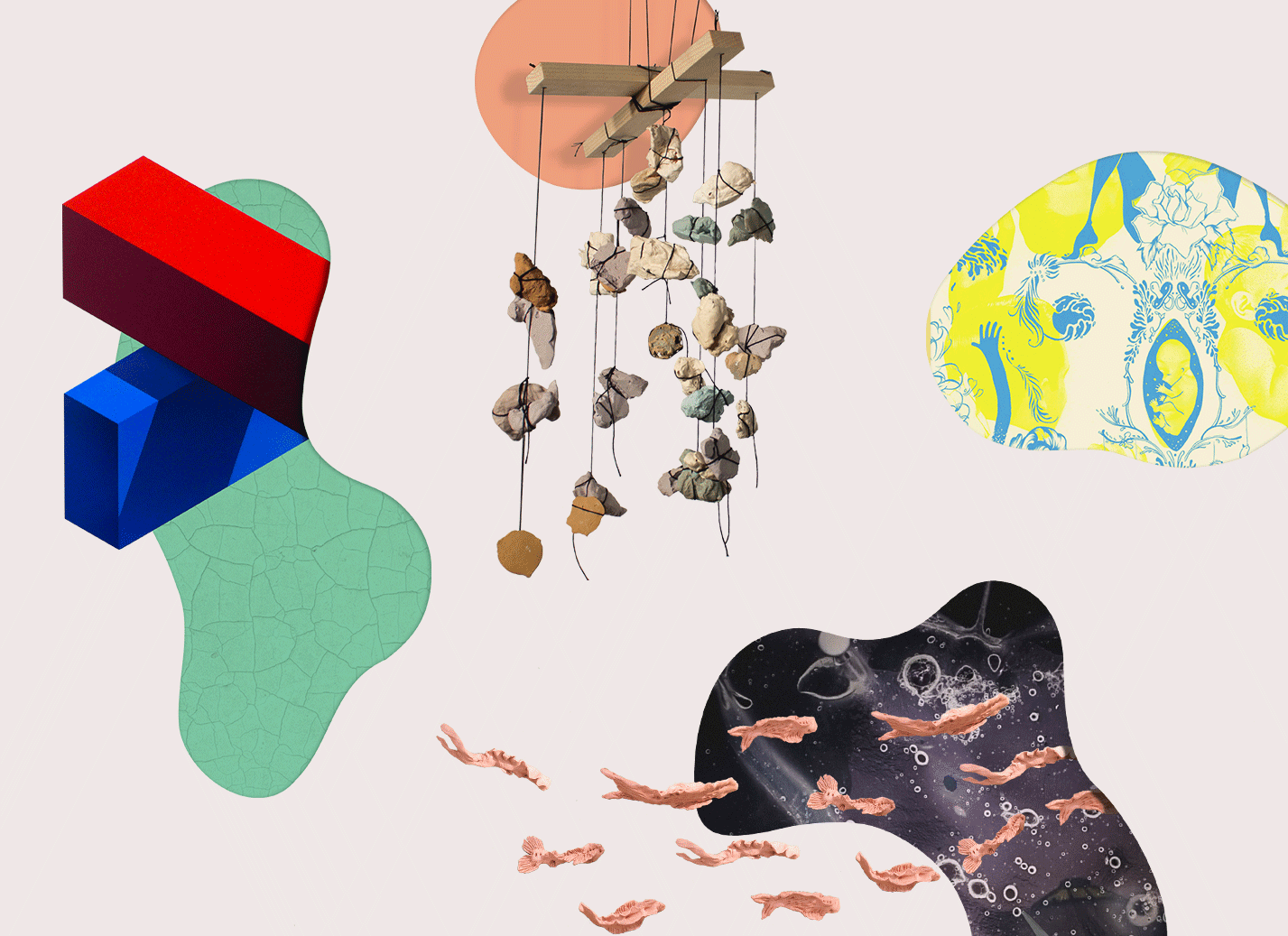
GENRE: DANCE, INSTALLATION, INTERACTIVE, MEDIA ART, MULTIMEDIA, PERFORMANCE ART, POETRY, THEATRE, VISUAL ART
TYPE: EXHIBITION, PERFORMANCE
Re:Building Resilience features 25 installations that examine all facets of mental health issues. This will be our last festival at 651 Dufferin Street before moving to a brand new facility at the Centre for Addiction and Mental Health. What better way to say “good-bye” than to animate all 11,000 square feet with performance art, installations, theatre, dance, film and media art?
Tickets and Viewing Options
Tickets for virtual viewing are pay what you wish. Virtual viewing is available throughout the festival. With your ticket, you will have access to a virtual tour that includes a virtual swag bag with extra features from the 25 projects on offer. All ticket holders will also be invited to receive physical RWM swag bags available for free curbside pickup during festival hours.
Please Note: There is one virtual ticket available for the entire Re:Building Resilience Exhibition. Whether you’d like to see one project or all of them, you only need to book one ticket to access everything. The exhibition runs October 15-25, and all purchasers will be sent a link to view the virtual content. Any ticket bought prior to October 15 will receive a follow up email on the 15th with the link.
ACCESSIBILITY
Self-Care Kits are available for free curbside pickup to ticket holders. Kits can be picked up from 651 Dufferin Street between the hours of 12PM-9PM, October 15-25. If pickup is not an accessible option for you, contact justina_zatzman@workmanarts.com for accommodation.
